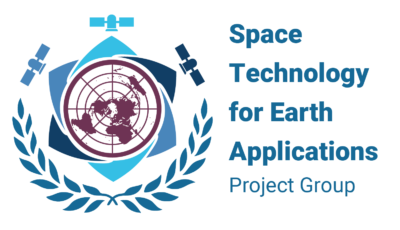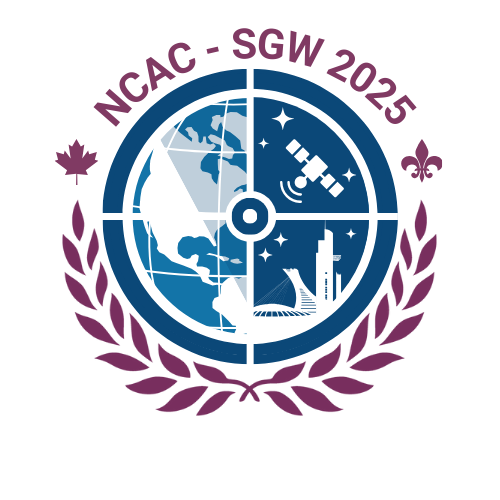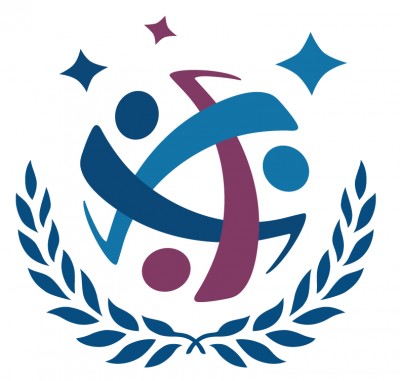Space Technology for Earth Applications PG

Projects
Ongoing Projects
Contact person: Sagarika Valluri (Rika)
[email protected]
Social reform and human upliftment are central to a developing economy’s growth framework. In the process of generating social policy it is imperative to substantiate said framework with tangible data points. The growing need to support public policy research is at the forefront of social development in growing economies. Using satellite imagery will enable researchers and policy enforcers to access information that cannot be retrieved from traditional sources.
Satellite data is influential in everyday life, prompting scientists to use multiple research tools to understand the interaction between human activities and the environment. Human Impact Research (HIR) is a correlated mapping of all social reform research that directly impacts human lives, hence becoming a central aspect of public policy development. Specifically, it covers – poverty, economic welfare, human rights, and subsequent infringement – modern slavery, war crimes, illegal deforestation, humanitarian mapping, forced migration and climate change-induced human death, and health welfare.
HIR is supported by both traditional methods of data aggregation (surveys, interviews, historical information, etc.) and remote sensing data. The traditional data collections help identify key social problems that require a policy change, whereas spatial data processing aids in the identification of key environmental factors that influence socio-economic issues. Through HIR we aim to mitigate human rights infringement and empower human development through data-driven evidence. To address these issues, the paper proposes a computationally driven data generation and prediction model that gives insights into HIR. The research also recognises social variations across regions and region-centric data adaptation. An attempt is made to also automate the process of data collection by introducing rudimentary Deep & Machine Learning (DL/ML) to study non-space data and then predict correlated HIR trends (e.g. lands with low agricultural fertility resulting in rural poverty, leading to land abandonment, mass migration, and low urbanization).
The ML algorithms are designed to singularly study and investigate social factors using satellite data and identify social inflection points rather than using standard models whose by-product is also applied to socio-economic reform. This research also proposes to enhance current social reforms in the form of – HIR that is driven by minimum-bias data sets and fast learning algorithms. We aim to achieve three key aspects of HIR, poverty analysis through data that delivers predictive insights for the next 5 years, human rights infringements across politically and, culturally unstable geographies, and migratory analysis to improve integration into society and resettlement activities.
This project is open to accepting new members from any background. Please reach out to us if you are interested in contributing.
Contact person: Charles-Aimé Nzeussi Mbouendeu, Project Secretary
[email protected]
The number of global weather-related disasters in the past decades has been estimated at 90% of the total number of disasters. These are likely to increase in severity and frequency with current and forecasted global climate changes. Disaster mitigations are extremely challenging in areas with socio-economic limitations. This project aims to develop a feasible and economically viable solution for flood management in developing countries. The mitigation will rely on the integration of data from social media crowdsourcing (e.g. Twitter, Flickr), optical satellite imagery, and synthetic aperture radar (SAR). The project is expected to produce open-sourced software packages that are easy to use. Moreover, the project will also host annual workshops for our local partners in Cameroon to transfer the knowledge gained from this work.
This project is currently endorsed by the International Geological Correlation Programme (IGCP), a cooperative enterprise of United Nations Educational, Scientific and Cultural Organisation (UNESCO) and International Union of Geological Sciences (IUGS) under project 734.
This work has been accepted to present at the 72nd International Astronautical Congress (IAC-21) in Dubai, United Arab Emirates. Our session is B1.5: Earth Observation Applications, Societal Challenges and Economic Benefits.
This project is open to accept new members from any background. Please reach out to us if you are interested in contributing.
Past Projects
Contact person: Marco Fortunato
[email protected]
The use of GNSS (Global Navigation Satellite Systems) to support PNT (Positioning, Navigation and Timing) estimation is used across market sectors, from supporting financial transaction time stamping to navigating ships, cars, aircraft and trains across the globe. A strong level of trust is given to this infrastructure, given that often the economy and human lives are at risk if the systems were to fail. However, even if these systems are very important, there is a very real risk that malicious actors could disrupt their operation, through signal jamming and spoofing to direct destruction of the infrastructure itself. Among the upgrade,
both in space and user segments, of traditional GNSS constellations (e.g. GPS, Galileo, GLONASS or BeiDou) to increase their robustness and resilience, the design and development , both global and regional, LEO (Low Earth Orbit) constellations supporting navigation and communications is nowadays a common trend in several national and international space agencies.
The aim of this project is to study current challenges, policies and laws which guide the design and development of new PNT constellations and identify the key system aspects to be considered when facing such projects. LEO constellations will be the main focus of this project with the attention also on the Lunar
environment. Several initiative, e.g. LunaNet (from NASA) and Moonlight (from ESA), have been currently put in place to develop NAVCOM (Navigation and Communication) constellations for the Moon with similar challenges to be faced in LEO environments: multipath effects, robustness, resilience and security.
Therefore, answering to the main technical and legal aspects on the Earth environment and trying to move towards the Moon is one of the main objective of this project.
This project is open to accepting new members from any background. Please reach out to us if you are interested in contributing.
Contact person: Alina Vizireanu
[email protected]
GEO4Schools is an educational programme which aims to communicate the importance of geographic information systems (GIS) together with earth observation (EO) data for society. Consisting of eight lessons for pupils aged between 12-14 years, it communicates basics of GIS tools and EO data analysis and concludes with a challenge to assess their community problems based on the new learned techniques and methodologies. GEO4Schools fosters the development of critical-thinking, problem solving and communication and opens up the door to exciting careers in conservation and environmental protection, town planning, as well as diplomacy, tourism or teaching. SGAC answered Michael Hughes’ call, Assistant Head Teacher at Ellesmere Port Catholic High School, Cheshire, UK, to engage the Geospatial and Earth Observation sectors into enabling his young students to understand and see the real-life applications of Earth Observation and GIS data.
This project is open to accept new members from any background. Please reach out to us if you are interested in contributing.
Contact person: Eva Fernandez Rodriguez
[email protected]
The aim of AIOFAR is to improve ocean farming performance by studying the feasibility of farms based on the location and respective threats such as harmful algal blooms, ocean acidification and harsh weather conditions. This objective is achieved by analysing several sources of input data: multispectral images and marine data parameters from the European Union (EU) Copernicus program, positioning information from Global Navigation Satellite Systems (GNSS), in-situ data obtained through deployed Internet of Things (IoT) devices, and feasibility databases from specialised organisations. All this data is evaluated using artificial intelligence and other advanced processing techniques. This concept has been awarded the 3rd place prize by the Farming by Satellite program 2020, a joint initiative of the EU Agency for the Space Programme and the European Environment Agency that rewards young innovators exploring the use of data from the European space programmes Galileo, European Geostationary Navigation Overlay Service (EGNOS), and Copernicus to improve agriculture and reduce environmental impact.
The work has been accepted for a presentation at the ION GNSS+ 2021 conference titled “Feasibility of Ocean Farming Through Fusion of GNSS-R and Other Earth Observation Data”. Furthermore, a “Live demonstration of data processing using artificial intelligence and satellite data for ocean farming applications” with a respective paper will be presented at the 72nd International Astronautical Congress (IAC-21) in Dubai, United Arab Emirates.
AIOFAR is a multidisciplinary and international team composed of nine people specialised in different fields such as Earth observation, GNSS, Artificial intelligence, and Business. The team is open for new members with the following profiles: IoT engineer for prototype development, machine learning engineer for software development, financial management, audiovisual creative for outreach resources.
Contact person: Swarnajyoti Mukherjee
[email protected]
Space-based Earth Observation allows us to simultaneously detect changes on Earth’s surfaces over a large area. As a result, it is often used to assist with disaster assessments to understand associated property damages in the affected areas. In recent years, the use of social media, such as Twitter, has been proven to be useful in providing supplemental information for emergency situations. This study aims to demonstrate the benefits of supplementing Earth observations with Twitter data in disaster management by using a recent fire in Southern California as a case study. This Bobcat fire started on September 6, 2020 and burned for over 3 months. The plume from the fire spanned more than 1,000 miles with smoke traveling across the entire North American continent. 115,000 acres of land got affected along with unprecedented wildlife loss. Available remotely sensed data allows us to understand pre- and post-fire conditions of the land. Geotagged tweets are analyzed and compared with levels of pollutants measured from ground instrumentations and the smoke coverage seen from satellite imagery. The addition of Twitter data allows us to derive a more holistic view of the impacts of the Bobcat fire, including physical and emotional state as an aftermath of the fire. With better understanding of social media utilization, we would be able to develop a better risk reduction tool that could be used for the purposes of early warning of disaster events and reducing mental stresses after a disastrous event.
This work has been accepted to present at the 72nd International Astronautical Congress (IAC-21) in Dubai, United Arab Emirates. Our session is B1.5: Earth Observation Applications, Societal Challenges and Economic Benefits.
Contact person: Krittanon (Pond) Sirorattanakul
[email protected]
In the modern era, developments in transportation and online communication platforms reduce barriers and allow citizens of this world to connect with one another. While many efforts have been utilized over the past few years to improve diversity in various fields, there is a limited number of available studies that track our progress toward a more inclusive community. In our definition, diversity is not limited to only genders and races, but also includes ages, nationalities, and educational backgrounds. Our project aims to contribute further to this area by analyzing the current state of diversity in the space industry by utilizing available data including SGAC memberships, IAC conference participations, and co-authors in peer-reviewed publications. We plan to compile aggregate statistics of the current state of diversity in the space industry, and when possible, also track how these statistics have evolved over the past decades. Moreover, we also plan to utilize data from Twitter in a sentimental analysis based on natural language processing of the texts in the tweets to analyze the emotional responses of the public on recent efforts aiming to improve diversity. We also plan to extend our project in the future to include a development of recommended best practices on improving diversity for different organizations from different sectors. Since our project is relatively new, any new ideas or research directions are welcomed.
Contact person: Krittanon (Pond) Sirorattanakul
[email protected]
Space-related non-governmental organizations (NGOs) utilize products from space-based observatories or engage in issues related to space policy. They play a unique role in the Disaster Risk Management (DRM) framework as they integrate the scientific and non-scientific communities through outreach activities, education, space awareness, capacity building, and crowdsourcing of volunteers. This study explores the perception of space-related NGOs in DRM using an online questionnaire-based survey distributed worldwide to over 150 organizations. The results from the study suggest that personnel from the private sector, academia, and governmental agencies working in the field of DRM are conscious of the importance of space-related NGOs in DRM and their increasing presence across the world. International collaborations and Private-Public Partnerships (PPP) are believed to be fundamental in the implementation of successful DRM policies, especially in developing nations. The future of disaster response strategies is guided by the exciting field of artificial intelligence advanced through scientific research at universities and research institutes. Our analysis using the demographic data collected demonstrates the feasibility of using such questionnaire-based surveys to further study the impact of political, economic, and cultural backgrounds on human perceptions.
This project has produced a technical report. You can find a pdf version of our report here. To cite our report, please use the following:
Sirorattanakul, K. et al. (2021), Perceptions of space-related non-governmental organizations in disaster risk management revealed from a questionnaire-based study, Space Generation Advisory Council project report, 1-18.


